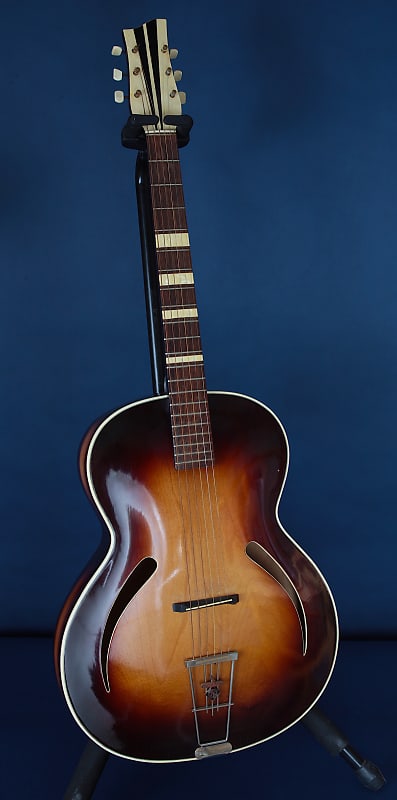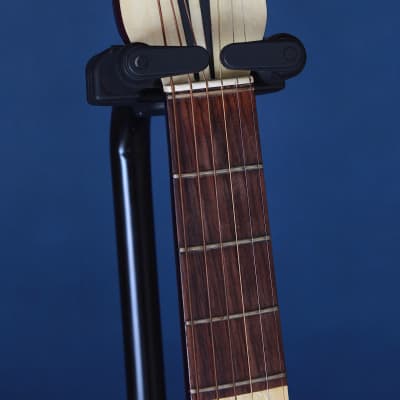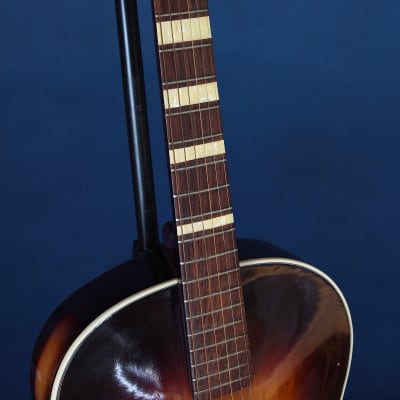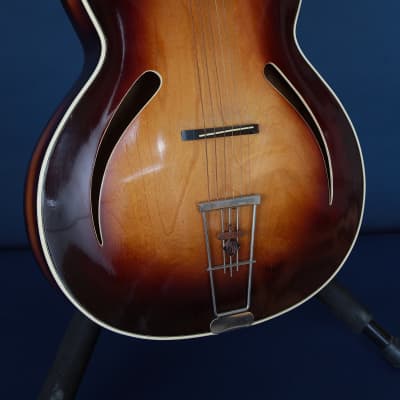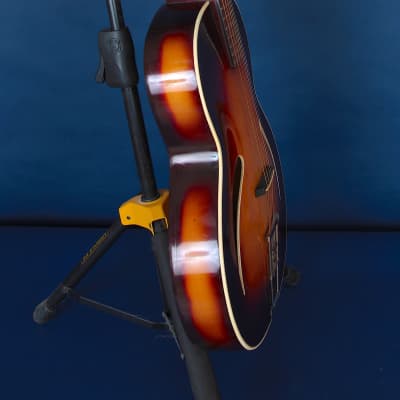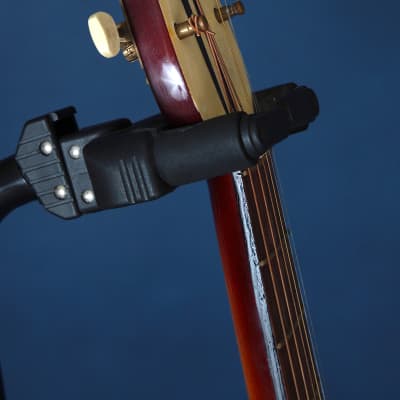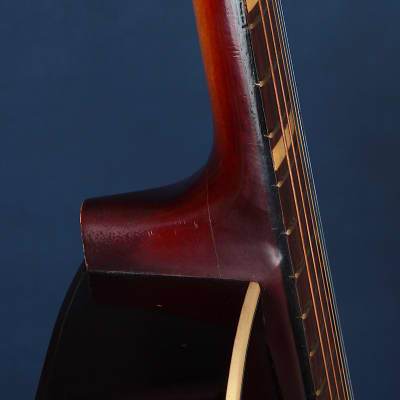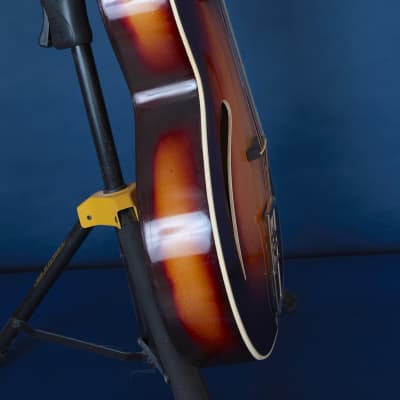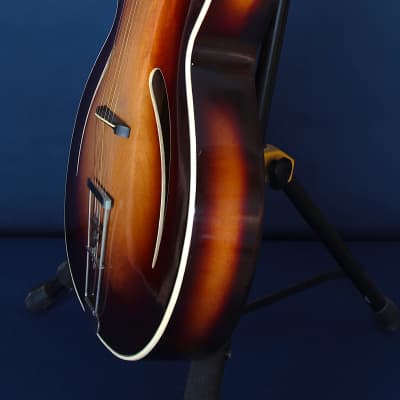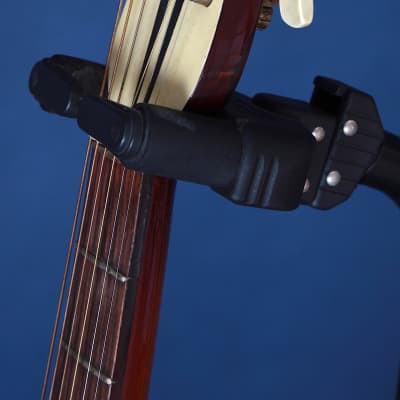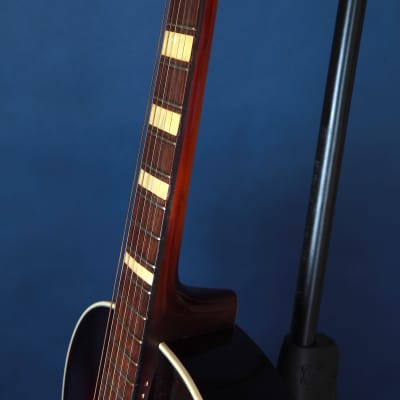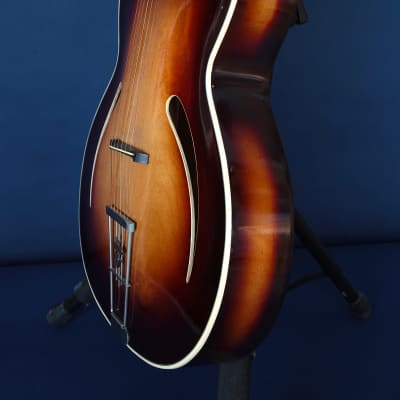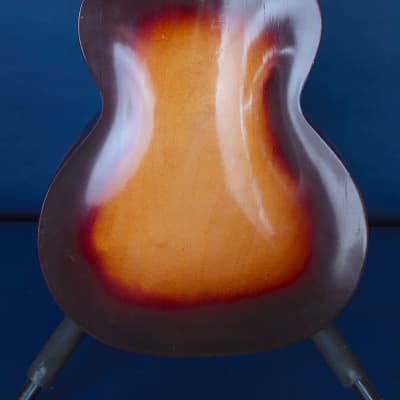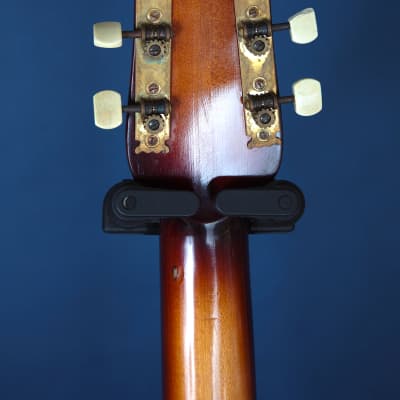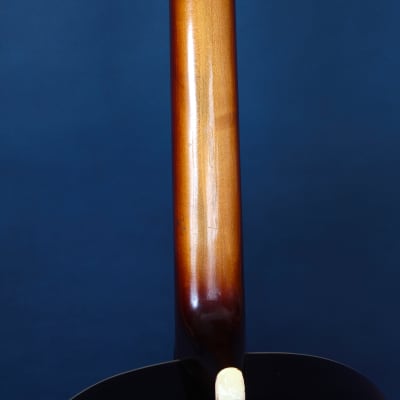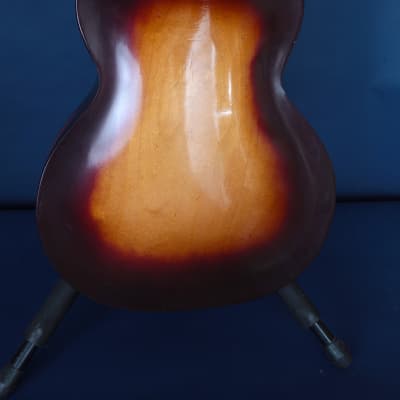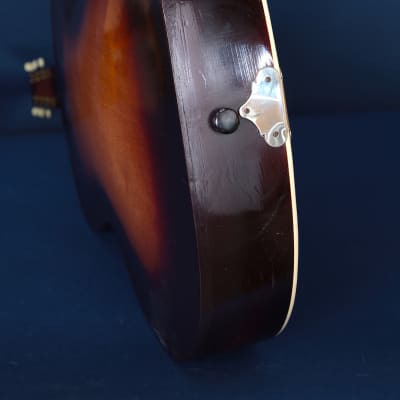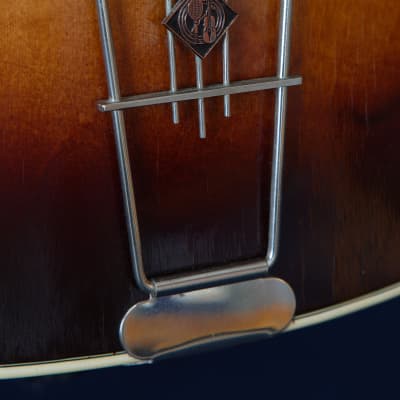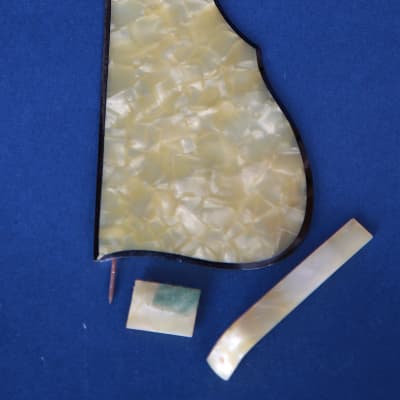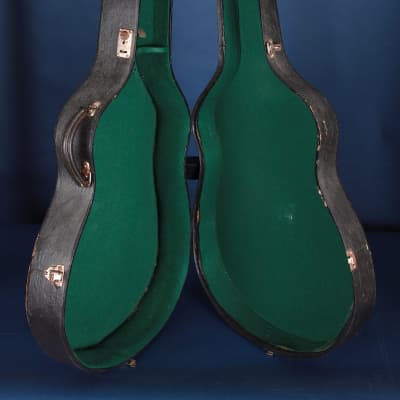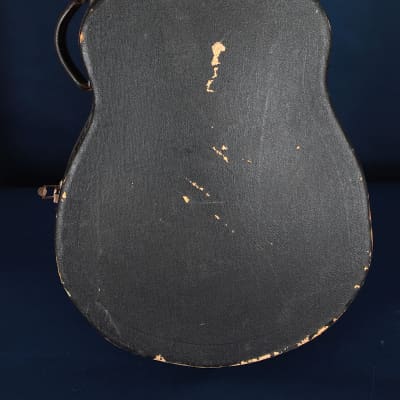Here is a very cool old German Archtop, made by Hopf in the 1950s, It is beautiful to behold (in a German 1950s arch top aesthetic) with its distinctive, bound Cat’s Eye Sound Holes, but it needs a good bit of help.
Here’s the good stuff. The entire guitar seems to be Maple construction, top, back, sides, and neck. My guess is that the back and sides are possibly laminate. The fretboard looks to possibly be Brazillian Rosewood. The finish is in excellent condition, with only a small degree of crazing. The original pick guard (very funky) is packed in the hard shell case, which is in very good condition, overall, with one seam on the top needing some repair or duct tape.
Here’s what you’re getting into. Small stuff: some of the MOTS inlay on the fretboard needs to be either sanded down or removed and reglued. One of the tuners has a broken button.
BIG STUFF: The neck is warped. The action at the twelfth fret is about 5/32nds of an inch, but from the twelfth fret on, everything is fretted out. So, lowering the action by lowering the bridge, will only worsen the fretting out. There is only about a 32nd of an inch of relief in the neck, more than you would want but not unworkable. It would appear that at the very least, the neck will need to be reset and the angle changed (and the bridge changed to suit). It is also a possibility that the fretboard will have to be removed and the neck straightened. There is no truss rod adjustment screw, but that doesn’t necessarily mean there is no truss rod. It may have a non-adjustable “steel reinforced neck.”
As it is, right now, I can comfortably fret barre chords up to the sixth fret. After that, the action is too high to be comfy. If you are looking for a slide guitar, this may be the one! Ultimately, I think this guitar will be a killer if the neck can be made right and a pickup added.
Please check the photographs carefully, as I have tried to show the guitar from every angle.
This guitar is sold AS IS and is not returnable unless it arrives in a condition other than as described or photographed, here.
Price: $495.00 (was $600) + $125 shipping (Lower 48 of USA only)
Assessing Instrument Condition
Instrument condition is a concern for sellers and buyers alike, and it is important that we are both on the same page. Often, terms used in defining instrument condition, are somewhat misleading because they only reference appearance, and not functionality. All instruments that we list are defined in the following ways, and under the accompanying understandings:
Brand New - Brand new simply means that it has never been sold, previously. It is safe to assume that a Brand New instrument functions perfectly, but it is NOT necessarily the case that it is without blemishes. Think of going into a guitar store and taking a new instrument off the wall; it will occasionally have dings or scratches that it has picked up by bumping into other instruments or from another person, trying it out. If we sell an instrument as Brand New and it has blemishes, they will be photographed for the listing.
Mint - Mint condition is Flawless. It is an instrument that is both flawless in appearance and perfect in its functionality.
Near Mint - If our listing stresses that the instrument is Near Mint, it may have a cosmetic flaw or two. They will be photographed or described as part of the listing.
Excellent - An instrument in Excellent condition will function perfectly, but may show some signs of use on close inspection. Minor nicks and dings, cloudy spots of finish, or fading color or finish, is all par for the course. The determination of Excellent condition will also depend on the age and overall quality of the instrument. A 1940s Gibson J200 with a scratch or two, a nick in the finish, and even a repaired bridge plate, but otherwise perfect and with a great playing action, can be said to be in Excellent Condition. At the same time, a five year old Gibson J200 with the same blemishes might be considered to be in Excellent Minus condition. And a 1970s era guitar that has been played regularly, gigged out, and has some scuffs and dents to show for it, but which don’t tend to show from a short distance, and which sounds and plays great, is still in Excellent Condition. There is a degree of “it’s all relative,” at work here.
Very Good - An instrument in Very Good condition is still perfectly functional, but will have blemishes, scuffs, dents and dings that are readily apparent, at a reasonable viewing distance (like from the audience to the stage). That instrument also may have signs of prior repairs, or may have been retrofitted or customized with non-original parts. Any of these conditions with an instrument will be photographed and described as part of the listing.
Good - An instrument in Good condition will play well, but perhaps not without some minor issue. For instance, an electric guitar with a scratchy potentiometer, may still be considered to be in Good condition if that pot does not affect the output of the pickup. Or a guitar might lack a tremolo arm or pick guard. The instrument is playable, the part can be replaced if the buyer wishes to do so, and thus it is in good condition. Again, any and all defects or limitations to the instrument will be defined or photographed for the listing.
Fair, Poor or Project - This instrument is most likely to be in need of substantial work to make it fully functional. It may be a violin with an open seam along the back, a guitar with a lifting bridge or non-working pickups, a saxophone in need of a repad, or a guitar or mandolin with a high action and in need of a neck reset.
The Bottom Line - The bottom line is this: Functionality is more important than Aesthetics (though aesthetics ARE important), and the quality and recognized market value of the instrument takes precedence over minor cosmetic concerns. Read the listing carefully. Study the photos thoroughly. Reach out and ask questions first (we are always happy to talk shop!).
